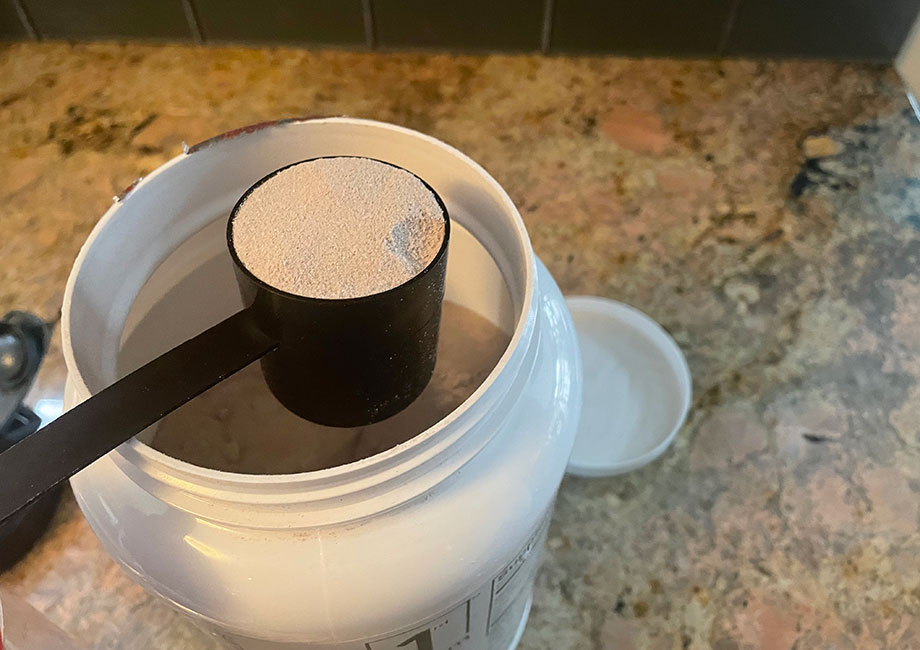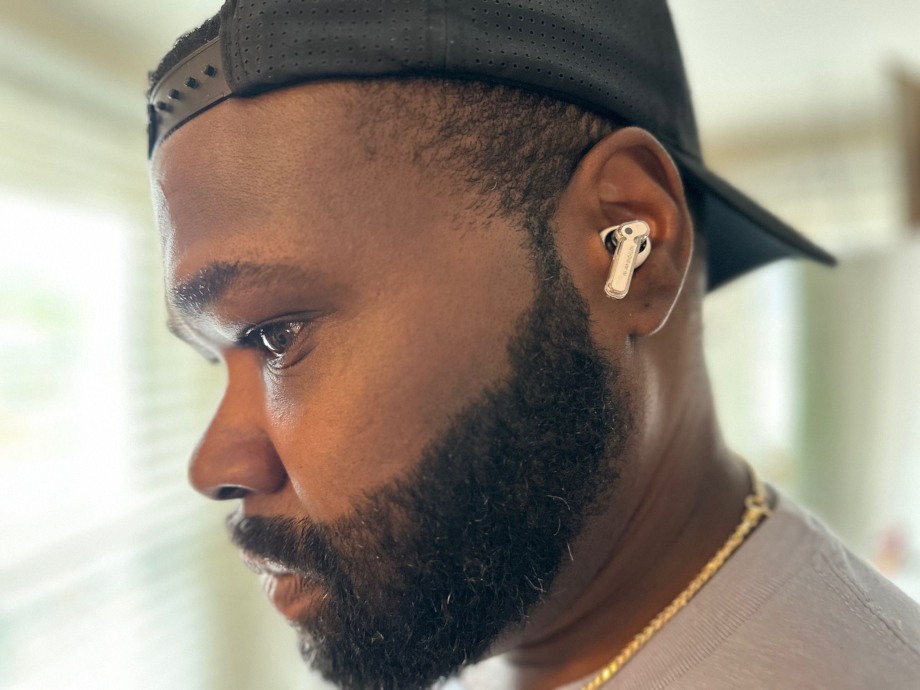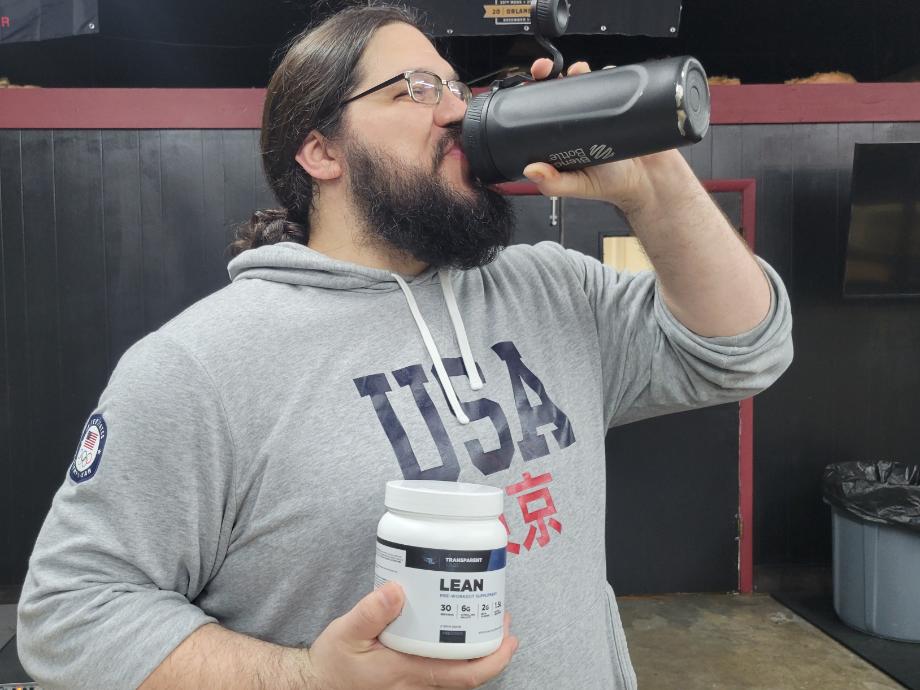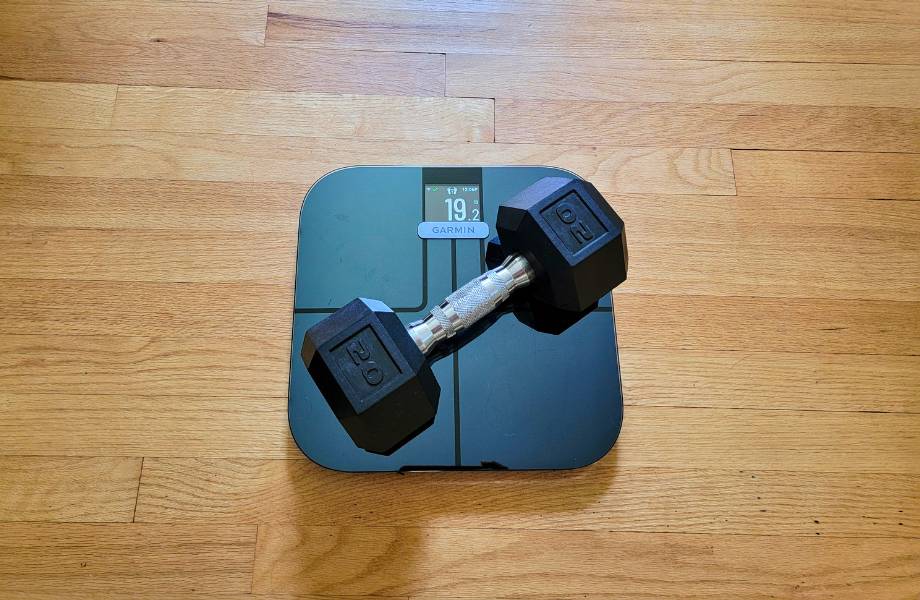If you’re asking yourself, “What the heck is dry scooping?” Then welcome to the club. Full disclosure: when I was first asked to weigh in on the concept of dry scooping a few months ago, I had to consult “Professor Google.” I’m a registered dietitian nutritionist, but even I can’t keep up with every diet, fitness, and supplement trend that graces social media.
RELATED: Can You Dry Scoop Creatine?
Yes, dry scooping has become part trend and part challenge thanks to TikTok and other social media outlets. It also turns out dry scooping predates social media, but you may not have heard about it unless you’re part of the professional weightlifting or bodybuilding circuit.
In the digital fitness world, dry scooping is trending. But are there any benefits to the dry scooping TikTok trend, or is this another hyped-up, but inevitably bad, idea? The short answer is: It’s a bad idea and you should not do it. Read on for everything you need to know about dry scooping protein powder, starting with what exactly it entails, risks and side effects, and the best ways to actually consume protein powder for maximum health benefits.
Medical disclaimer: This article is intended for educational and informational purposes only. It is not intended as a substitute for medical advice. For health advice, contact a licensed healthcare provider.
What is Dry Scooping?
If your brain works like mine, or you’re just showing your age, you may think you’re already dry scooping protein powder. After all, protein powders are dry, powdered supplements that you, well, scoop to mix into water, milk, coffee, a smoothie, or whatever your preferred liquid may be. But that, dear friends, is not what dry scooping refers to.
Dry scooping refers to taking a serving of a powdered supplement, like protein powder, by mouth without any liquid. In other words, you “chew” and swallow a scoop of dry protein powder. If that sounds unpleasant, you’d be correct. So, how did dry scooping become a thing, and why are people doing it?
As mentioned above, some pro bodybuilders have been dry scooping workout supplements way before smartphones and social media even existed. Their reasoning is the same as today’s influencers: a belief that ingesting protein powder dry allows it to be absorbed faster and get to work more quickly.
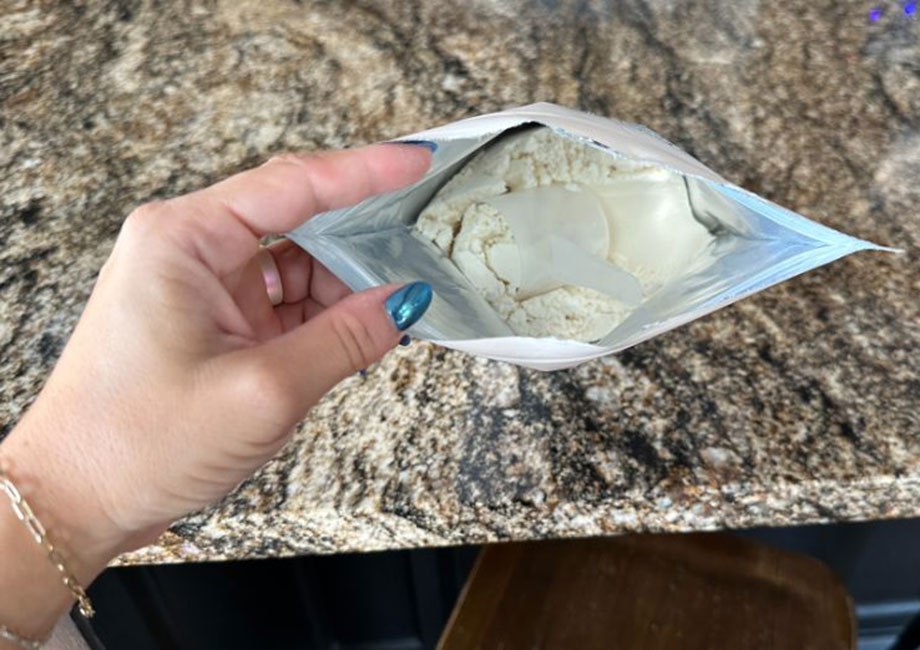
Some dry scooping advocates believe that taking supplements dry allows them to be partially absorbed through the mucosal membranes in the mouth and enter the bloodstream faster than passing through the digestive system. They also believe dry scooping delivers a more concentrated dose of protein to your body than “diluting” it in liquid. Both of these supposed benefits are false, but more on that shortly.
Of course, people are also trying dry scooping for the sheer challenge factor and to ramp up engagement on social media—aka likes, comments, and followers. Young athletes and adolescent1 TikTok users are particularly susceptible to the idea of dry scooping. If social media makes something look cool or sends the message “this is good for you,” those with less life experience under their belt tend to buy in.
It’s not just protein powder being swallowed dry. People have also been dry scooping pre-workout powders and creatine in TikTok videos. This is incredibly dangerous, considering the majority of pre-workout supplements contain stimulants. Some pre-workouts have a caffeine content equivalent to several cups of coffee. Health professionals have issued warnings2 about the dangers of dry scooping pre-workout, including heart palpitations and chest pain, increased heart rate, increased risk of heart attack, and even death3.
But what about protein powder? Can it safely be dry scooped or are there risks?
Why Dry Scooping Is Not A Good Idea
The tl;dr is don’t. There’s a long list of reasons why dry scooping protein powder—or any other supplement, for that matter—isn’t a good idea. Hopefully this is one bandwagon you aren’t considering hopping aboard, but if you are, here are six notable risks of dry scooping.
1. Protein powder is designed for mixing with liquid
Whether you go for plain protein or love trying all the fun flavors, protein powder has the best taste and consistency when dissolved in water or another liquid.
RELATED: Best-Tasting Protein Powder
One of the biggest complaints about protein powders is their texture. In fact, solubility is one of the main criterias we use in our GGR supplement testing methodology when reviewing protein powders.

No one especially loves a protein powder that doesn’t dissolve well. Protein that clumps up or has a gritty or chalky texture when mixed with liquid turns a lot of people off from certain protein powders. So, why would you want to swallow what’s essentially one big, dry, gritty clump of protein powder?
2. Dry scooping is Messy and Uncomfortable
Good luck eating any dry powdered ingredient without getting it all over your face or clothes. Now, think about the size and shape of your protein scoop—it’s not designed to spoon protein into your mouth, so you’re definitely going to wear some of that protein. Plus, most protein scoops are pretty large, so it’s 100% difficult to swallow an entire scoop in one go.
Whatever makes it into your mouth is likely to clump and stick to your teeth, tongue, and the roof of your mouth. Don’t be surprised if trying to work your protein down this way leaves you coughing and gagging. Remember the cinnamon challenge?
3. Dry Scooping Isn’t Good for your Respiratory Health
There’s a high risk of aspirating, or inhaling, some of your protein powder as you try to swallow it dry. Doing so can make you cough and gag even more, but it can also increase your risk of respiratory health problems.
Your body isn’t meant to inhale fine matter particulates. Accidentally inhaling protein powder dust can irritate your airway and lungs, contribute to inflammation, and increase your risk of respiratory infections.
4. You Can’t Bypass Protein Digestion
Protein is digested primarily in your stomach and small intestine. Most types of protein used in protein powders, including whey concentrate, whey isolate, and pea protein, are intact proteins that need to be broken down into amino acids so they can be absorbed into the bloodstream for use in the body. This process only happens in the digestive system, so the thought that protein powder will be absorbed through mucosal membranes in the mouth is incorrect.

RELATED: Pea Protein Benefits
It’s also wrong to think that dry protein powder will be digested or absorbed faster than protein mixed with liquid. Fluids support hydration and aid digestion by helping move food and waste through the digestive system. Water also plays a role in nutrient absorption, including amino acid absorption.
5. Dry Scooping Can Upset Your Stomach
We’re all guilty of quickly mixing a scoop of protein with liquid and chugging it down when we’re in a rush, but in reality, downing your protein too fast can cause stomach upset, gas, and/or bloating. Individuals who are sensitive to dairy and use whey protein are even more susceptible to digestive upset as it’s one of the main whey protein side effects.
A concentrated hit of any type of protein via dry scooping can upset your stomach and be tougher on your digestion than protein powder dissolved in liquid.
6. There’s No Science to Back Up Dry Scooping.
Listen, there is zero research on ingesting protein powder dry. That means there’s no proof that taking protein powder without liquid makes your body absorb it any faster. Nor is there any evidence that protein powder works better when taken this way.
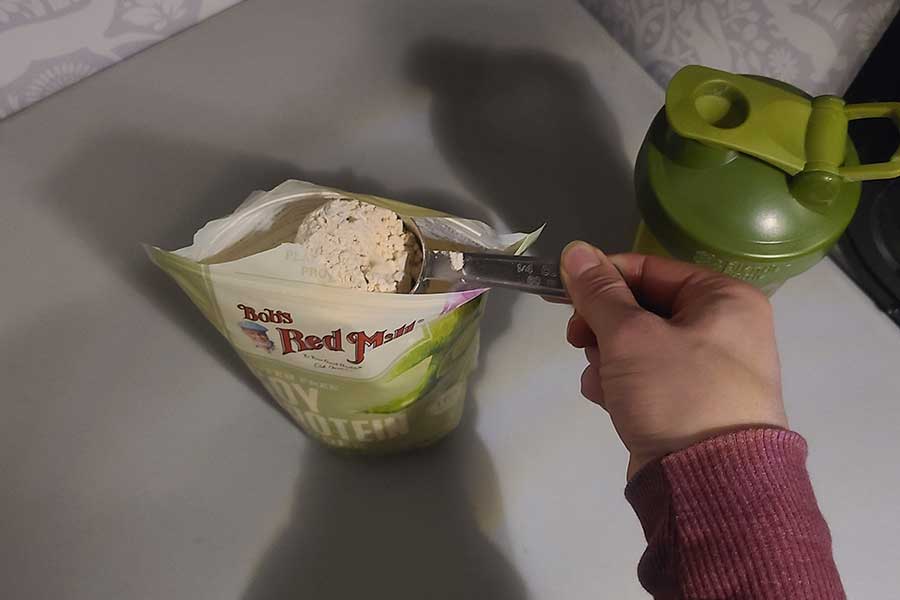
What does exist, though, are lots of scientific studies that show eating high-protein foods and supplementing with protein powder can help support muscle health, body composition, and overall wellness.
How to Take Protein Powder
It’s possible to meet your protein needs with food alone, but many fitness devotees find it easier to track and hit their protein goals by supplementing their diet with protein powder.
One of the best things about protein powder is its versatility. In a hurry, you can just mix a scoop with water and be on your way, but there are lots of fun and delicious alternatives when you’re learning how to use protein powder.
You can use half the normal amount of liquid per scoop of protein to make a thick protein pudding that can be eaten with a spoon, or the flavor and texture of your protein can easily be mixed up by swapping water for another liquid. Here are some ideas:
- Use dairy or nondairy milk for a creamy protein shake
- Elevate your protein smoothie recipes by blending in fruit and/or veggies
- Blend with ice, frozen bananas, and liquid of choice for a frozen shake
- Create hot or cold protein coffee
- Make your very own protein-based Chai tea
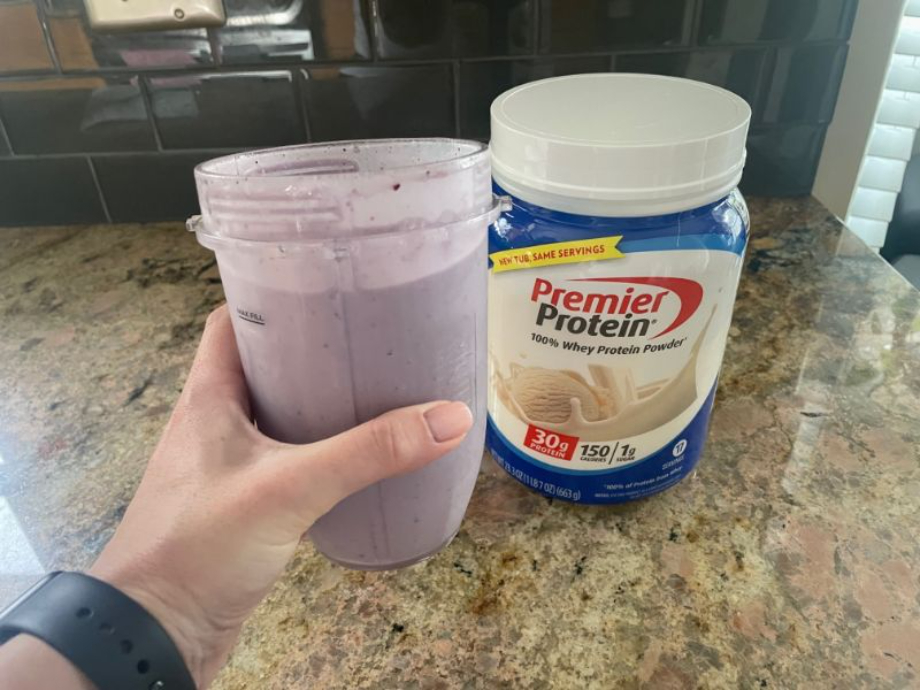
Want more ideas besides beverages? Protein powder will dissolve into recipes that contain liquid ingredients, such as:
- Overnight oats
- Chia pudding
- Yogurt bowls
- Pancake or waffle batter
- Baked goods, like muffins or cookies
Note: You may need to increase the amount of liquid in some recipes, since protein powder tends to act as a thickener.
Benefits of Protein Powder
The benefits of protein powder are many. Getting enough protein is critical if you’re trying to build muscle, lose weight, or both. Individual protein needs vary depending on weight, height, age, activity level, and fitness goals.
Most protein powders contain 20 to 30 grams of protein per serving. Just like a multivitamin may help fill in gaps in nutrition, protein powder can provide a guaranteed amount of protein on days when food intake varies. Protein powder can also help you increase your total daily protein intake, coming in clutch when you’re on-the-go or in between grocery trips.
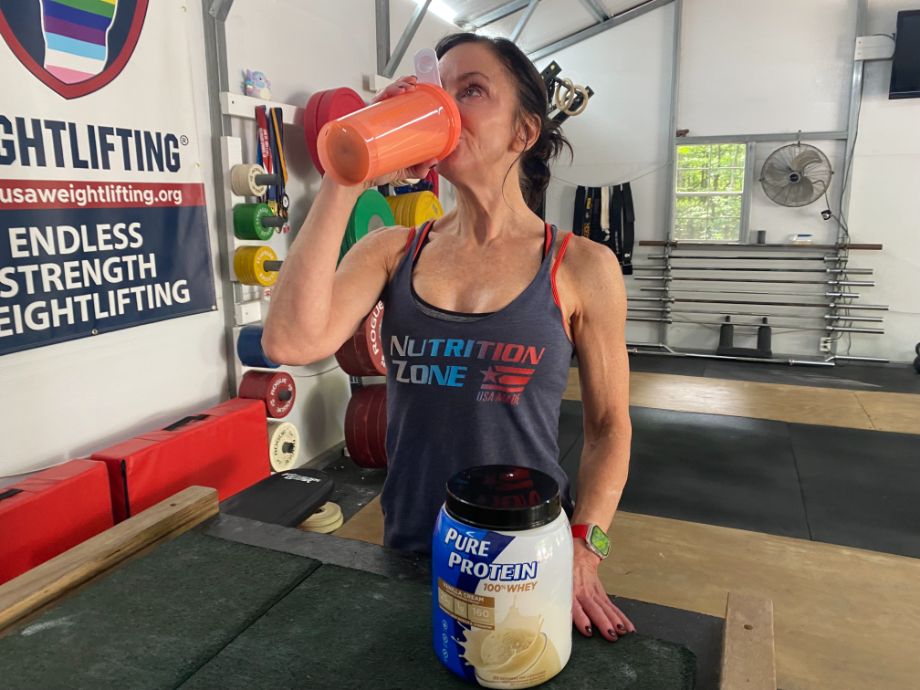
As part of a balanced diet, protein powder can help:
- Support muscle growth4
- Maintain lean mass as you age
- Preserve lean mass on a calorie deficit
- Support weight loss
- Enhance satiety
- Increase strength5
- Improve exercise performance
- Ease and/or speed up post-workout recovery
Dry Scooping Protein Powder: Final Thoughts
For many fit folks, protein powder remains an essential part of their fitness routine. Protein powder offers a ton of awesome benefits, like helping you consume enough protein every day, helping your muscles recover from exercise, and supporting body composition. However, it’s important to remember that protein powders are dietary supplements and, therefore, aren’t subject to regulation by the Food and Drug Administration6.
Using any supplement in a way that goes against the manufacturer’s recommendations for dosing and usage creates the potential for health risks and side effects. If you think the dry scooping trend seems smart or fun, think again. Dry scooping is a risky craze with zero evidence-based benefits for performance or health.
Remember:
- Dry scooping protein powder can upset respiratory and digestive health
- Taking protein without water won’t speed up absorption, but may in fact slow it down
- Liquids help food and nutrients move through your digestive system and aid absorption
- Protein powder can be added to all kinds of liquids and recipes for more variety
Dry Scooping Protein Powder: FAQs
Is it OK to dry scoop protein powder?
Dry scooping protein powder isn’t recommended by health professionals. Besides being unpleasant to get down, dry scooping comes with the risk of aspirating (or inhaling) some of the protein powder. Aspiration can irritate your lungs, resulting in inflammation and an increased risk of developing respiratory infections.
Is it OK to eat protein powder without water?
Technically, you can eat protein powder without water but it won’t have a pleasant taste or texture. Swallowing a dry powder is also tough to do and can be dangerous for your health.
Protein powder is designed to dissolve in liquid for ease of use and optimal taste and texture. If you don’t like mixing protein powder with water, you can try dairy or nondairy milk, smoothies, coffee, tea, or mixing it with less liquid to create a thicker pudding-like consistency.
What are the benefits of dry scooping protein powder?
There are no proven benefits to dry scooping protein powder. Individuals that endorse dry scooping believe that taking protein powder without water allows it to be absorbed faster. However, there is no evidence to support that taking protein powder without water or other liquid enhances absorption or provides a greater benefit to your body.
These statements have not been evaluated by the Food and Drug Administration. This product is not intended to diagnose, treat, cure, or prevent any diseases.
References
- Ganson KT, Hallward L, Testa A, Jackson DB, Nagata JM. Prevalence and correlates of dry scooping: Results from the Canadian Study of Adolescent Health Behaviors. Eat Behav. 2023 Jan;48:101705. doi: 10.1016/j.eatbeh.2023.101705. Epub 2023 Feb 6. PMID: 36764046.
- Research: Dangerous Challenge on “Dry Scooping” Pre-Workout Powder is Prevalent, Popular on Internet. American Academy of Pediatrics. October 7, 2021.
- Dry scooping can be life-threatening. Poison Control.
- Jäger R, Kerksick CM, Campbell BI, et al. International Society of Sports Nutrition Position Stand: protein and exercise. J Int Soc Sports Nutr. 2017;14:20. Published 2017 Jun 20. doi:10.1186/s12970-017-0177-8
- Morton, R. W., Murphy, K. T., McKellar, S. R., Schoenfeld, B. J., Henselmans, M., Helms, E., Aragon, A. A., Devries, M. C., Banfield, L., Krieger, J. W., & Phillips, S. M. (2017). A systematic review, meta-analysis and meta-regression of the effect of protein supplementation on resistance training-induced gains in muscle mass and strength in healthy adults. British Journal of Sports Medicine, 52(6), 376–384.
- Center for Food Safety and Applied Nutrition. (2022, October 21). Information for consumers on using dietary supplements. U.S. Food and Drug Administration.


